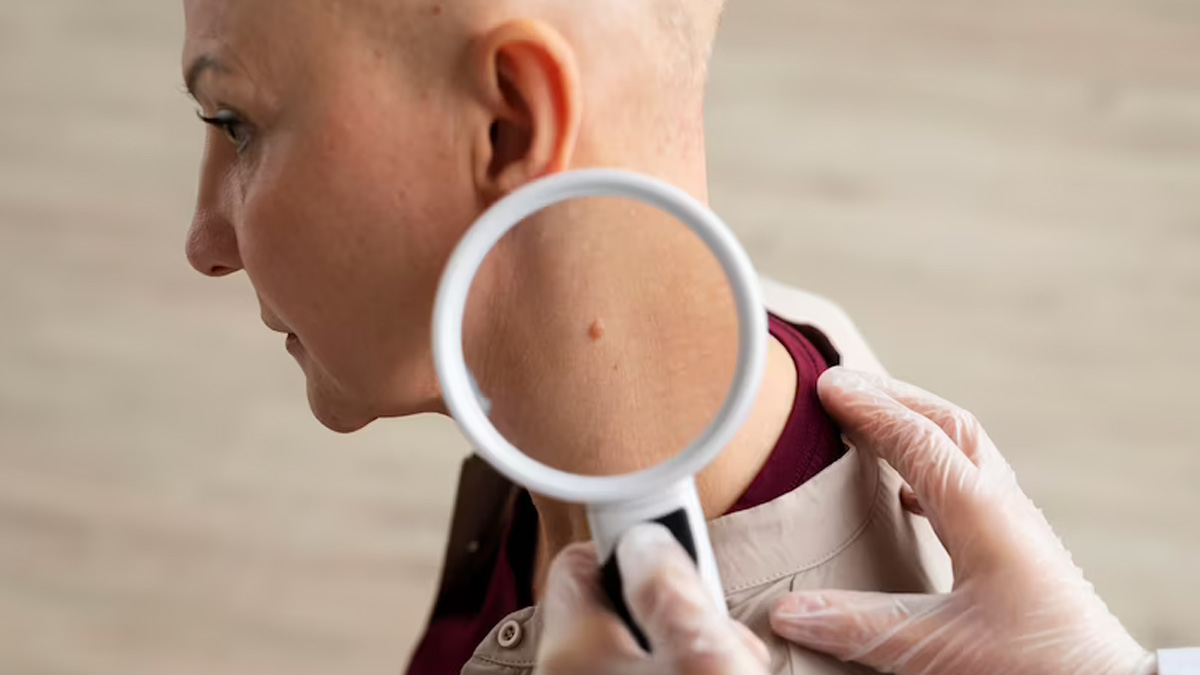
The skin is the largest organ in our body, which can also develop cancer. According to the World Health Organization (WHO), between 20-30 lakh cases of non-melanoma skin cancers and 1.3 lakh melanoma skin cancer cases occur globally each year. As per the Skin Cancer Foundation Statistics, one in every three cancers diagnosed is a skin cancer.
Table of Content:-
May is observed as Skin Cancer Awareness Month, which is why, we at Only My Health, have taken the initiative to speak with an expert to spread more awareness about the disease. Dr Sachin Gupta, Consultant, Department of Dermatology, Amrita Hospital, Faridabad, discusses possible risk factors and ways to reduce the risk.
Also Read: Warning Signs Of Skin Cancer You Should Know About
Types Of Skin Cancer

There are three major types of skin cancer: basal cell carcinoma, squamous cell carcinoma and melanoma.
Basal cell carcinoma is the most common type of skin cancer. It develops in the basal cells, which are found in the outermost layer of the skin. Although it rarely spreads to other parts of the body, early detection and treatment are important.
Squamous cell carcinoma is another type of skin cancer that commonly occurs on sun-exposed areas of the skin, such as the face, neck, and hands. If detected and treated early, the prognosis is generally good, but it can spread to other parts of the body if left untreated.
Melanoma develops in melanocytes, the cells responsible for producing melanin. It is often characterised by the appearance of abnormal moles or dark spots on the skin. Melanoma can be aggressive and has the potential to spread to other organs.
Know The Risk Factors
Dr Gupta said, “Skin cancers are becoming more common in our country, but the good news is that if caught early, they can be completely cured.”
He emphasises on the need to identify common risk factors, which include:
- A family history of skin cancer
- Fair skin that burns easily
- Excessive sun exposure
- A weak immune system
Also Read: Worried If Cervical Cancer Can Lead To Infertility? Here's What Expert Has To Say
Signs To Note
Some of the common symptoms of skin cancer include:
- Unusual changes in the appearance of the skin, such as the development of new moles or growth of existing moles
- Changes in the size, shape, colour, or texture of existing moles or skin lesions
- Sores that do not heal or that continue to bleed, itch, or crust over
Important Tests To Take

It's important to note that not all skin cancers display noticeable symptoms, which is why regular skin check-ups and screenings are crucial, especially for individuals with a higher risk of developing skin cancer.
Dr Gupta said, “During a skin check-up, the doctor carefully examines skin for any changes. They pay extra attention to moles that look different, such as asymmetrical shape, uneven edges, varied colours, or size larger than 6 millimetres. These atypical moles indicate a higher risk of skin cancer. They might use a special magnifying tool (dermatoscope) to have a closer look. If anything suspicious is found, a small skin sample may be taken for microscopic examination to detect cancer cells.”
How To Reduce Your Risk
To reduce your risk of skin cancer, Dr Gupta recommends protecting yourself from the sun. “Try to stay in the shade when the sun is the strongest, wear a hat and put on sunglasses. Use sunscreen with SPF 30 or higher every day. Remember to reapply sunscreen every 2-3 hours, especially if you're sweating or swimming. In summary, sun protection measures and regular visits to a dermatologist can help prevent and detect skin cancer early,” he added.
Also watch this video
How we keep this article up to date:
We work with experts and keep a close eye on the latest in health and wellness. Whenever there is a new research or helpful information, we update our articles with accurate and useful advice.
Current Version